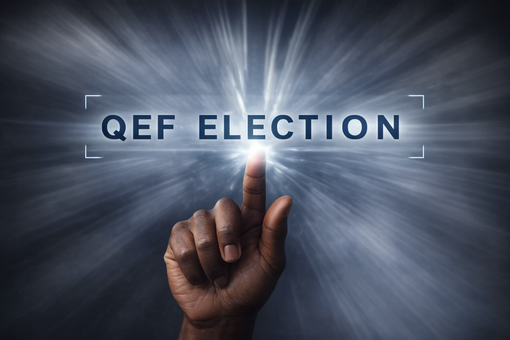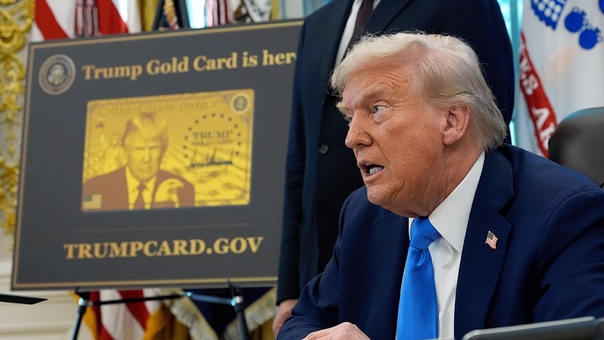Tax reform for US owners of foreign corporations: Understanding the Sec 962 election

Owning a company outside the US can feel confusing when you see taxes taken in two places. The Section 962 election is a rule that helps make things fair. It allows an American who owns a foreign-controlled corporation overseas to use the same tax steps that a large US company uses. This means you can lower your bill if the foreign tax rate is not too high. It ties together how your company earns money, how you pay taxes abroad, and how you report them at home.
In this guide by Taxes for Expats, you will learn the components that make this rule easy to follow and use.
- What Section 962 means for US owners of foreign corporations: it lets you be taxed like a US company on your CFC profits, not as an individual with higher rates.
- How Section 962 works: you use the lower corporate tax rate and count part of what you already paid in another country to cut your US tax.
- Benefits of making a Section 962 election: it can save money when the foreign tax rate is in the middle range and help you keep more of your earnings.
- How to make a Section 962 election: you choose it each year when you file your return, and include a short note (with specific contents) with your tax forms, and many more.
Choosing the right election can make a big difference over time. It helps you plan better, avoid paying more than needed, and keep your taxes simple and fair. Learn more about our services or contact us to get started.
What is a Section 962 election?
A Section 962 election is a rule that helps US people who own a CFC pay tax in a simpler, fairer way. It lets them use the same tax rate as a company instead of the higher personal rate. Later, when they take money out of the company, that part is taxed again. This can lower total tax liability and make foreign income reporting easier.
According to David Lihn, IRS-Authorized Enrolled Agent (EA) and tax manager at Taxes for Expats:
"A 962 election can sometimes reduce US tax on CFC inclusions by applying corporate-style rules and credits to an individual, but it affects future distributions and requires precise modeling."
The law states that an individual United States shareholder may elect to be subject to tax at corporate rates on amounts included in gross income under section 951(a) (26 C.F.R. 1.962-1(a)). It also allows a credit for certain foreign taxes paid by the CFC (26 C.F.R. 1.962-1(b)). IRS instructions tell filers to attach Form 1118 and Form 8993 when making the election.
Eligibility for making the election is clearly defined:
- An individual US shareholder, including a trust or estate, may make the election.
- The year must include Subpart F (section 951(a)) or GILTI (section 951A) inclusions from a CFC for the corporate-style computation to apply.
- The election must apply to all CFCs owned for that year and is filed with the tax return; revocation requires IRS consent.
How Section 962 works
In Smith v. Commissioner, a taxpayer who owned shares in a CFC used the Section 962 election to cut US tax but was later taxed again when cash came home. The court said the payout from Hong Kong was not a qualified dividend, showing that timing and how income moves between the company and the owner really matter. That same idea runs through how the election mechanism works in practice.
The mechanism of the election is simple. Each year, an individual adds up the CFC income that falls under Subpart F and GILTI, then pretends to be a company only for that step. For example, if the CFC earns 100,000 and pays some foreign tax, the person may claim a 50 percent section 250 deduction, so only half is taxed at the 21 percent corporate rate. A foreign tax credit can reduce the US bill further, though only up to 80 percent of the foreign taxes paid. What is left is the US tax liability for that year under Section 962.
This ties directly to how the election meets other tax rules:
- The PFIC rules do not mix with this setup, and how much it helps depends on the foreign tax rate and whether the high-tax exclusion wipes out GILTI.
- The same corporate rate and future change to the section 250 deduction shape the end cost when profits are later paid out.
These links show how Section 962 builds a bridge between foreign income and US rules. The table makes it easy to see how this approach compares with normal individual taxation.
| Topic | With 962 | Without 962 |
|---|---|---|
| Rate on inclusion | 21 percent corporate rate | Individual marginal rates |
| Section 250 deduction | 50 percent through 2025, then 37.5 percent for years beginning after 2025 | Not available |
| Deemed paid credits on GILTI | Allowed, 80 percent cap, no carryovers | Not allowed for GILTI |
| Later cash distribution | First offsets excludable 962 E&P equal to prior US tax, then taxed as a dividend from the foreign corporation | Dividend rules apply without 962 buckets |
Key benefits of a Section 962 election
Many US owners of foreign corporations want to pay fair taxes without giving away too much of what they earn overseas. A Section 962 election helps make this happen by turning complex tax rules into clear advantages. With help from TFX, expats can see exactly how this choice saves money and keeps their taxes under control.
- The rule gives you credit for up to 80% of the foreign tax your company already paid. Another step, called Section 78, adds that tax amount to your income first – it doesn’t give you extra credit, it just changes how the math works.
- It allows the use of the section 250 deduction, which cuts the income that is taxed by 50 percent through 2025 and 37.5 percent after that, making the final tax bill smaller before the 21 percent corporate rate is applied.
- It adjusts to the foreign tax rate because when that rate is at least 18.9 percent, the high tax exclusion can remove certain income from extra US tax, giving more balance between the two countries.
“If the client’s foreign company already pays a high effective foreign tax, an annual election may reduce or eliminate GILTI, but it requires detailed testing and consistency.”
- It helps avoid being taxed twice since any later payments from the CFC can be non-taxable up to the amount of US tax already paid, keeping double taxation in check and managing tax liability.
- It supports cash flow by allowing profits to stay and grow overseas before paying US tax, which gives owners more control over when to bring money home and how to plan future payments.

Potential drawbacks and limitations
Even helpful tax options have their weak spots. The Section 962 election can reduce a filer’s tax liability, but it carries limits that can narrow or delay the benefit.
- It applies only to Subpart F and GILTI income for the year in which it is made, and it automatically covers every CFC under the taxpayer’s ownership. This means you cannot apply the election to only one corporation while excluding others.
- The foreign tax credit for GILTI is limited to 80 percent of foreign taxes paid, and there are no carryovers to future years. If foreign taxes fluctuate, this rule can cause unused credits and higher US tax in low-tax periods.
- The section 250 deduction remains at 50 percent through 2025 but falls to 37.5 percent for later years. This scheduled drop increases the effective US tax on the same level of foreign income after 2025.
- The 21 percent corporate rate is used to compute the inclusion, and the section 78 gross up adds the foreign taxes to income before applying that rate. This often raises the base on which tax is calculated, slightly reducing the benefit of the election.
- When profits are distributed later, any amount that exceeds the tax already paid under the election becomes a taxable dividend. This second layer of taxation can offset part of the earlier savings.
- The benefit depends heavily on the foreign tax rate compared with the 18.9 percent high-tax threshold for GILTI. When a CFC’s rate falls below that level, residual US tax under the election increases sharply.
- Modeling total tax liability over several years is important before making this choice. Doing so helps capture timing issues between the inclusion year and later distributions.
How careful is the IRS about these elections?
The IRS pays close attention to every Section 962 election and reviews filings for accuracy and support. A clear statement must accompany the return, along with Forms 8992 and 8993 to show GILTI and the section 250 deduction. Form 1118 must be attached to claim the foreign tax credit, and Form 5471 should contain full CFC details and schedules. Maintaining consistent numbers across these forms reduces questions and review delays.
NOTE! In some practical cases, the Section 962 election can backfire instead of helping. These examples show when it may not deliver the intended relief.
- When a CFC already pays a foreign tax rate above 18.9 percent, the high-tax exclusion often gives a cleaner and simpler result than using the election.
- Cash paid out soon after the election may trigger a second round of US tax on the same income, cutting into savings.
- Very low foreign taxes, combined with the 80 percent credit cap, leave more of the income exposed to US residual tax.
- Once the section 250 deduction drops after 2025, the election’s long-term benefit becomes smaller while compliance costs remain.
How to make a Section 962 election
Imagine preparing your US tax return as the filing deadline approaches while your CFC has earned income overseas. The right timing and forms can make the difference between a smooth Section 962 election and a missed opportunity that delays relief or adds complexity.
What forms and filings are required?
To make a Section 962 election, attach a §962 statement with those details to your timely filed individual return. Once made, the choice stays for that year and can only be changed with IRS approval.
- Form 5471 – Used to report details of each CFC, including ownership, Subpart F income, and earnings and profits.
- Form 8992 – Calculates your GILTI inclusion amount and documents the income that triggers the election’s benefits.
- Form 8993 – Computes the section 250 deduction and confirms the portion of GILTI eligible for that reduction.
- Form 1118 – Claims the foreign tax credit under corporate rules, including the 80 percent limitation on deemed-paid taxes.
What is the deadline for filing the forms and election?
The election must be included with your income tax return by the normal due date of April 15 (or April 18 in some years). An automatic extension to June 15 applies for Americans living abroad, with the option to request an additional extension to October 15 by filing Form 4868. Filing after those dates generally voids the election for that tax year unless the IRS grants “specific 9100” relief.
The election applies to all controlled foreign corporations you own for that year and stays fixed once made. It sets how your inclusions are taxed and influences the timing of when any later distributions increase your tax liability. Accurate records and timely filings protect the election’s validity and prevent double taxation in future years.
- A US citizen runs a consulting business through a CFC in Dubai. The company pays a 10% foreign tax rate. By making a Section 962 election, the owner uses the corporate 21% rate and foreign tax credit to cut their US tax liability by nearly half compared to paying at individual rates.
- A self-employed American designer owns 100% of a UK limited company that earns profits but reinvests them. The Section 962 election lets her cut her US tax bill now with company-style rates and credits. When she finally takes the money out of the business, only part of it might be taxed again.
- A US trader operating through a Singapore CFC pays about 17% local tax. With the election, the section 250 deduction reduces the taxable GILTI amount, leaving little residual US tax. Without it, the same income would face full US rates.
- The founder’s start-up, Candian CFC, pays 15% foreign tax. A timely Section 962 election and proper Form 8992 filing allow the use of deemed-paid credits, cutting the effective US tax to a few hundred dollars instead of several thousand.
Is a Section 962 election right for you?
Making the right tax choice can determine how much you save today and how much flexibility you have tomorrow. A Section 962 election can be a smart move, but only after considering some factors.
- Income level: When income from a CFC is substantial, the corporate rate and section 250 deduction may lower your overall tax liability compared to being taxed at individual rates.
- Foreign taxes paid: If the foreign tax rate falls in the middle range – around 10% to 15% – the foreign tax credit can work efficiently under this election, reducing the US tax burden while avoiding double taxation.
- Long-term goals: Keeping profits in the CFC for reinvestment often favors making the election, since it can delay US tax until cash is actually distributed.
A Section 962 election can be powerful, but it’s not one-size-fits-all. Consulting Taxes for Expats ensures the details – like calculating the foreign tax credit or applying the section 250 deduction – are handled correctly, so you can manage your tax liability with confidence.


Stay IRS-compliant with your business abroad – we’re ready to help


